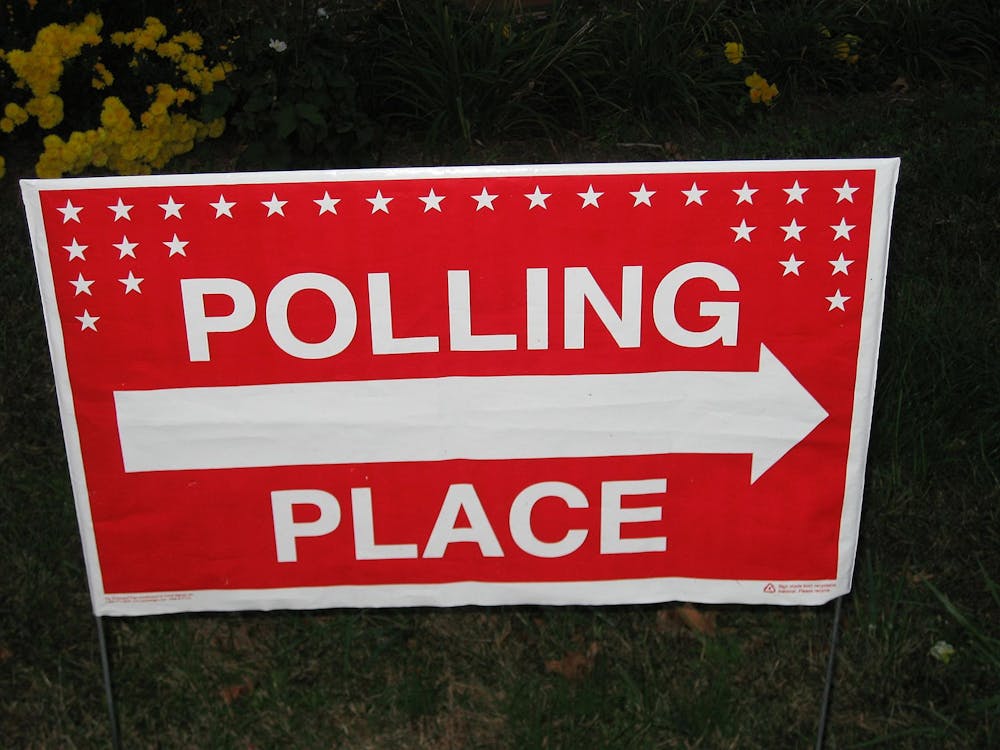By Fiona Espinoza-Castro
Staff Writer
As the presidential election draws closer, the race between Vice President Kamala Harris and former President Donald J. Trump has captivated the entire nation. Polls show Harris and Trump undergoing an intense battle as they fight for the popular vote.
According to USA Today, a poll conducted online by ABC News and Ipsos from Oct. 18 to 22 surveyed several U.S. citizens. Harris is reported to have a 51-47% advantage among voters, but the race between the two candidates remains close, especially given the influence of swing states.
USA Today reported that in the ABC News/Ipsos poll, Harris has the upper hand among voters who prioritize healthcare access and who want to protect democracy, while Trump performs better with those focusing on immigration policy and the current economic state.
One poll conducted by Quinnipiac University observed registered voters in the swing states of Michigan and Wisconsin. Michigan is reported to have 49% of voters supporting Harris and 46% supporting Trump, with the remaining candidates coming in at 2%. Wisconsin shows an even split, with 48% backing Harris and 48% backing Trump.
Quinnipiac also reported a clear gender gap between the two states. In Michigan, 57% of women support Harris, while 56% of men support Trump. In Wisconsin, Harris has 57% support among women, and Trump holds 59% among men.
In North Carolina, Spencer Kimball, an executive director of Emerson College polling, said that “Eight percent of Trump voters plan to split their ticket and also support Stein on the gubernatorial ballot, while little to no Harris voters are splitting their ticket to vote for Robinson.”
This comment refers to the upcoming election for governor between Democrat Josh Stein and Republican Mark K. Robinson. Emerson College reported that the main issue in North Carolina is the economy, with 40% of voters saying the issue is most important to them.
This is followed by protecting democracy at 14% and housing issues and immigration at 11%. In Wisconsin, the top issues for the voters are the economy at 41%, protecting democracy at 17%, access to abortion at 10%, and immigration and housing at 9%.
According to the Times/Siena College poll, nearly 15% of the surveyed voters named immigration as their top issue. Trump has pledged to hold the largest mass deportation in American history, capitalizing on concerns over immigration after the Biden administration’s records. According to the New York Times, voters trust Trump over Harris on immigration by an 11-point margin.
Sandra Remiker, a Republican from Barron, Wisconsin, told the New York Times, “I’m sorry, I do not agree with the illegals and the refugees coming in the country.” She later added, “I mean, if we can’t help our own people, our own veterans that are living on the streets, we shouldn’t be helping other countries.”
Despite this, some voters were swayed after watching the presidential debate, particularly by Harris’ composure on stage. Luis Mata, for example, said he changed his mind to vote for Harris instead of Trump, after acknowledging her governmental experience in contrast to Trump’s business background—two aspects that set the opponents apart.
While many voters remain pessimistic about the future of the nation, polls can provide insights into the public’s current leanings, though they are not entirely reliable. Polls rely on a diverse sample of voters, but with the country’s changing demographics and individuals choosing to opt out of surveys, some voices may be drowned out, according to Pew Research.
Weighing a poll on variables like age, race and gender is often not enough to get accurate results, as older adults and college graduates are more likely to take the survey than younger people.
Polling in 2016 and 2020 further showed large errors. Pew Research found that “the 2020 polls featured polling error of an unusual magnitude: It was the highest in 40 years for the national popular vote and the highest in at least 20 years for state-level estimates of the vote in presidential, senatorial and gubernatorial contests.”
The errors in the polls conducted two weeks before the election showed that Biden’s margin was twice as larger over Trump than it ended up being, according to the research outlet.
Pollsters are working to improve the accuracy of the polls, but an error of 4-5% is not concerning if the purpose is to describe whether the public has favorable or unfavorable opinions about candidates, according to Pew Research.
Swing states, too, can drastically change the course of the presidential election. Although one candidate may appear to have the advantage in several polls, the outcome remains uncertain and is far from set in stone.
As the nation waits, the uncertainty remains in the air, a reminder of the various futures America faces after election day.







